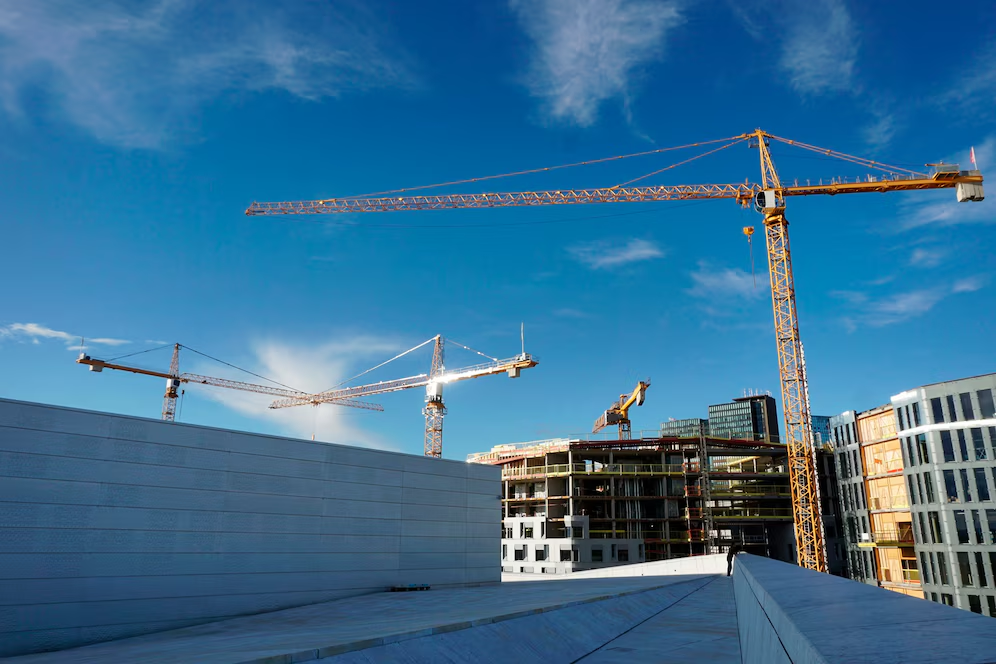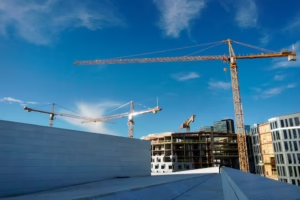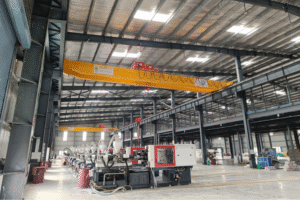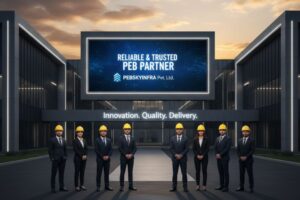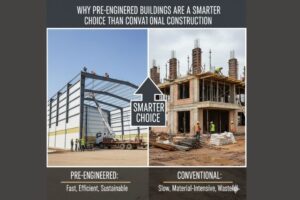In the fast-paced world of construction, speed, efficiency, and cost-effectiveness have become critical. One of the most transformative developments in this field is the Pre-Engineered Building (PEB) system. If you’ve ever wondered what a PEB company is, how it functions, and why it’s important—this guide is for you. We’ll also explore the benefits of working with a PEB building company, especially in regions like Delhi NCR, and take a glimpse into the future of the PEB industry.
Table of Contents
ToggleWhat Is a Pre-Engineered Building (PEB) Company?
A PEB company is a specialized construction firm that designs, manufactures, and erects Pre-Engineered Buildings. These are steel structures built using pre-fabricated components that are manufactured in a controlled factory environment and then assembled on-site.
Unlike conventional construction, where everything is built on location, PEB companies follow a systematic, modular approach. This not only speeds up construction but also ensures better precision, quality, and cost-efficiency.
Core Services Provided by a PEB Company:
- Structural design and engineering
- Fabrication of steel components
- On-site assembly and erection
- Project management and turnkey solutions
- Maintenance and retrofitting (in some cases)
Why PEB Companies Are Important in Modern Construction
The demand for faster, scalable, and economical construction methods has made PEB companies indispensable in today’s infrastructure ecosystem. Whether it’s warehouses, factories, airports, shopping malls, or institutional buildings, PEBs are becoming the go-to solution.
Here’s why PEB companies are crucial:
Speed of Construction
PEB buildings are 30-60% faster to build than conventional structures. The pre-fabricated approach reduces time spent on-site drastically.
Quality Assurance
Since components are manufactured in a factory setting, there’s strict quality control, reducing the chance of human error or weather-related delays.
Design Flexibility
PEB contractors can customize the design as per functional and architectural needs, including expandable layouts for future requirements.
Cost Savings
Reduced labor costs, minimized construction time, and optimized material usage all contribute to significant cost savings.
Benefits of Working with a Pre-Engineered Building (PEB) Building Company
Collaborating with an experienced PEB company offers a wide range of advantages:
1. Faster Turnaround
PEB companies significantly reduce project timelines by using ready-to-assemble components. This means faster project completion and quicker operational readiness.
2. Lower Construction Costs
Thanks to efficient material usage and reduced labor requirements, clients benefit from cost-effective construction.
3. Design Flexibility
PEB structures can be customized to meet specific requirements, whether for factories, warehouses, cold storage units, or even multi-storey buildings.
4. Durability and Strength
High-grade steel ensures structural stability and longevity, making these buildings suitable for various environmental conditions.
5. Low Maintenance
PEB buildings require minimal maintenance due to their rust-resistant and weatherproof features.
6. Eco-Friendly Solutions
With reduced material waste and recyclable steel usage, PEB construction contributes to sustainable building practices.
Future of PEB Companies in India and Beyond
The future of PEB companies, especially in industrial hubs like Delhi NCR, looks bright and promising. As industries expand and the demand for quick, scalable infrastructure grows, PEB solutions are expected to dominate the construction market.
Emerging Trends Shaping the Future of PEB:
- Increased Automation: Robotics and AI are being integrated into PEB design and manufacturing.
- Green Building Initiatives: More focus on energy-efficient and sustainable building methods.
- Smart Warehouses and Factories: PEB structures are being adapted for IoT-enabled facilities.
- Urban Expansion: Cities like Delhi, Gurgaon, and Noida are seeing a surge in demand for prefabricated industrial parks and logistics centers.
How to Choose Right PEB Contractor
Selecting a reputable PEB contractor is essential for the success of your project. Here’s what to look for:
- Proven track record with similar projects
- In-house design and fabrication capabilities
- Quality certifications (ISO, BIS, etc.)
- Strong client references and portfolio
- Timely project delivery and responsive support
If you’re based in or around Delhi NCR, ensure you work with PEB companies in Delhi NCR that understand local regulations, climate conditions, and project dynamics.
Also Read – What is a Secondary Framing System?
Conclusion
A PEB company plays a critical role in revolutionizing the construction industry. With their time-saving, cost-efficient, and environmentally-friendly solutions, they offer a smart alternative to traditional building practices. Whether you’re a business owner, developer, or industrialist, partnering with a trusted PEB building company or PEB contractor can set the foundation for long-term success.
As the market continues to evolve, PEB companies in Delhi NCR and across India are expected to lead the charge towards faster, greener, and more resilient infrastructure development.
Frequently Asked Questions
1. What materials are used in PEB?
PEB structures primarily use high-strength steel for frames, galvanized steel sheets for roofing and cladding, insulation materials (like glass wool or rock wool), fasteners, anchor bolts, and sometimes concrete for foundations and flooring.
2. What are the main components of a PEB structure?
The main components of a PEB structure include:
- Primary framing: Columns and rafters (main load-bearing members)
- Secondary framing: Purlins, girts, and eave struts (supporting the roof and walls)
- Roof and wall panels: Typically steel sheets
- Bracing systems: To ensure structural stability
- Accessories: Doors, windows, vents, gutters, and skylights
3. How many types of PEB buildings are there?
PEB buildings can be categorized into several types based on usage, such as:
- Industrial buildings (warehouses, factories)
- Commercial buildings (showrooms, malls)
- Institutional buildings (schools, hospitals)
- Agricultural buildings (barns, storage sheds)
- Recreational buildings (gyms, auditoriums)
4. What is the difference between PEB and RCC?
- PEB (Pre-Engineered Building): Made from steel, factory-fabricated, assembled on-site, faster and lighter.
- RCC (Reinforced Cement Concrete): Built on-site using cement and steel reinforcement, heavier, more time-consuming, and costlier in some cases.
5. What is primary and secondary framing?
- Primary framing: The main structural system, including columns and rafters, that supports the overall load.
Secondary framing: The supporting members like purlins, girts, and bracing, which transfer loads to the primary framing and help in roofing and wall cladding.

